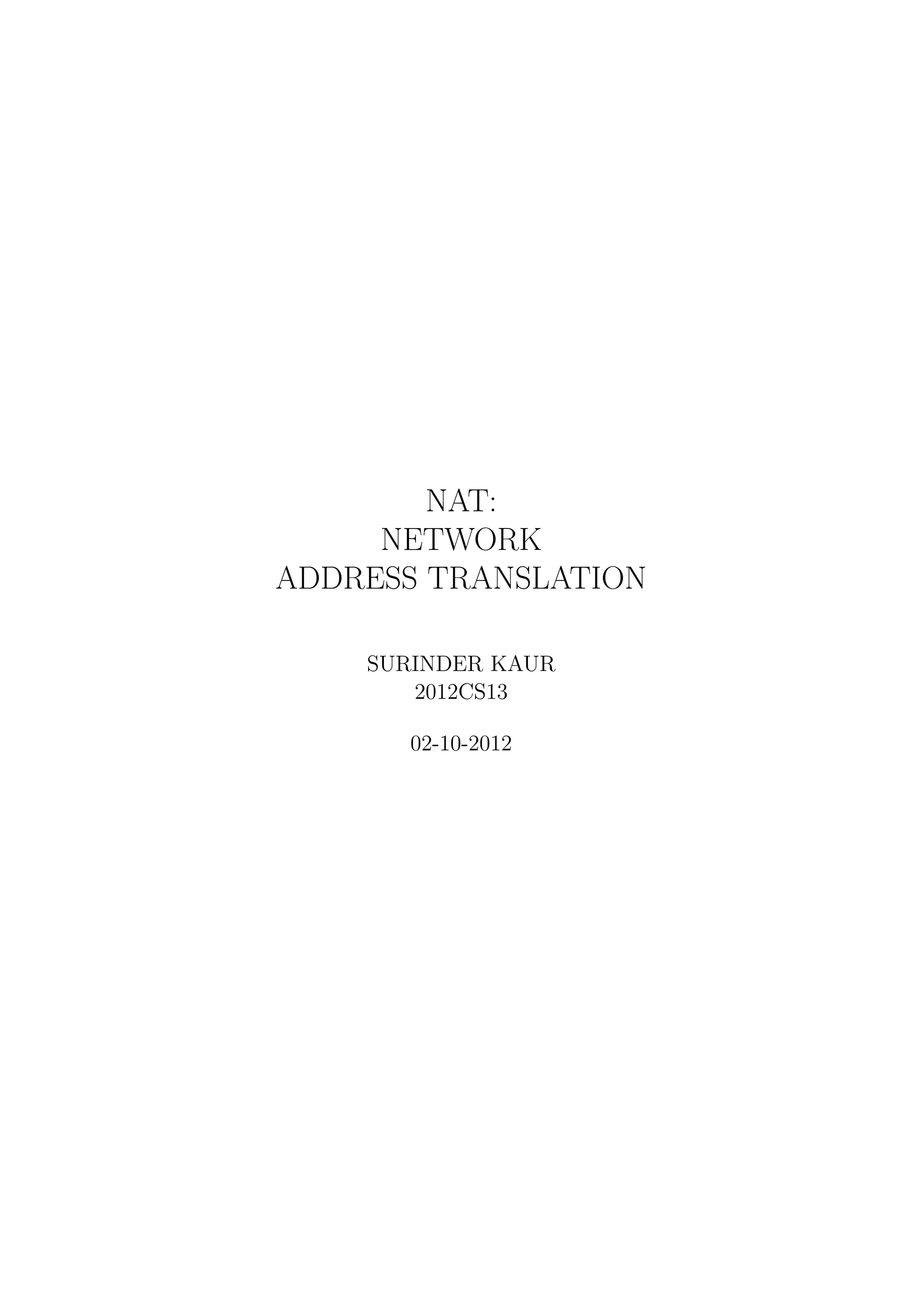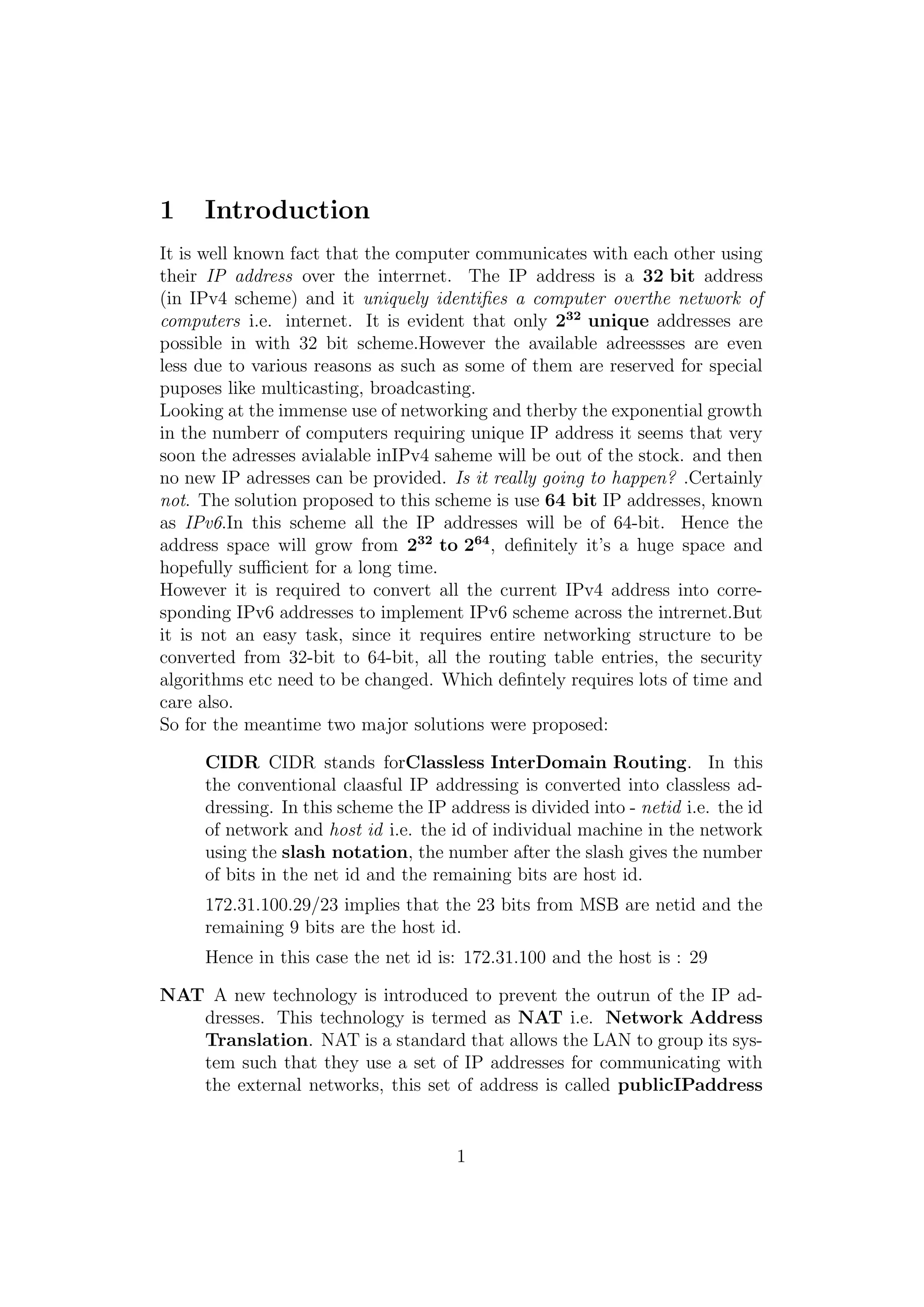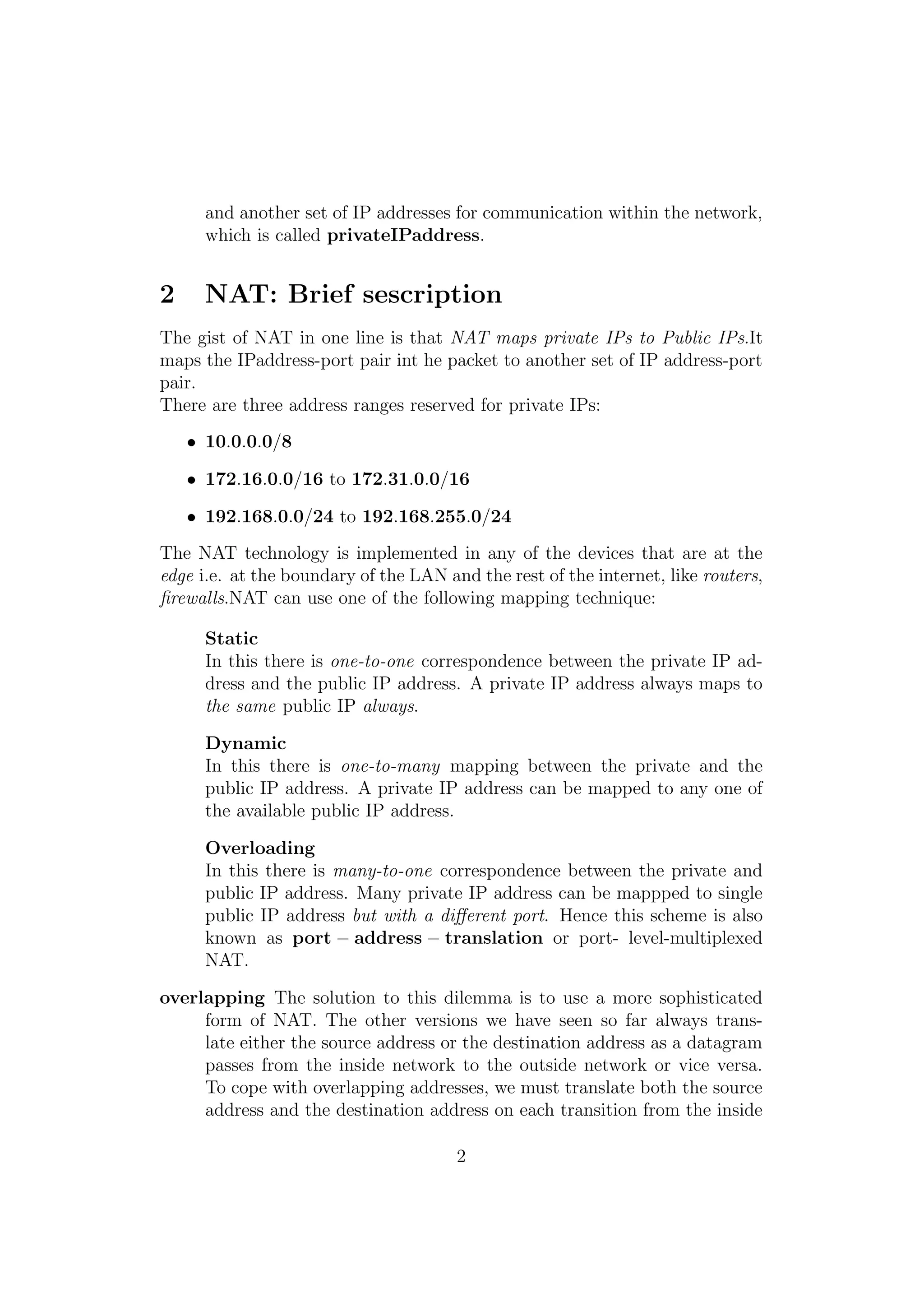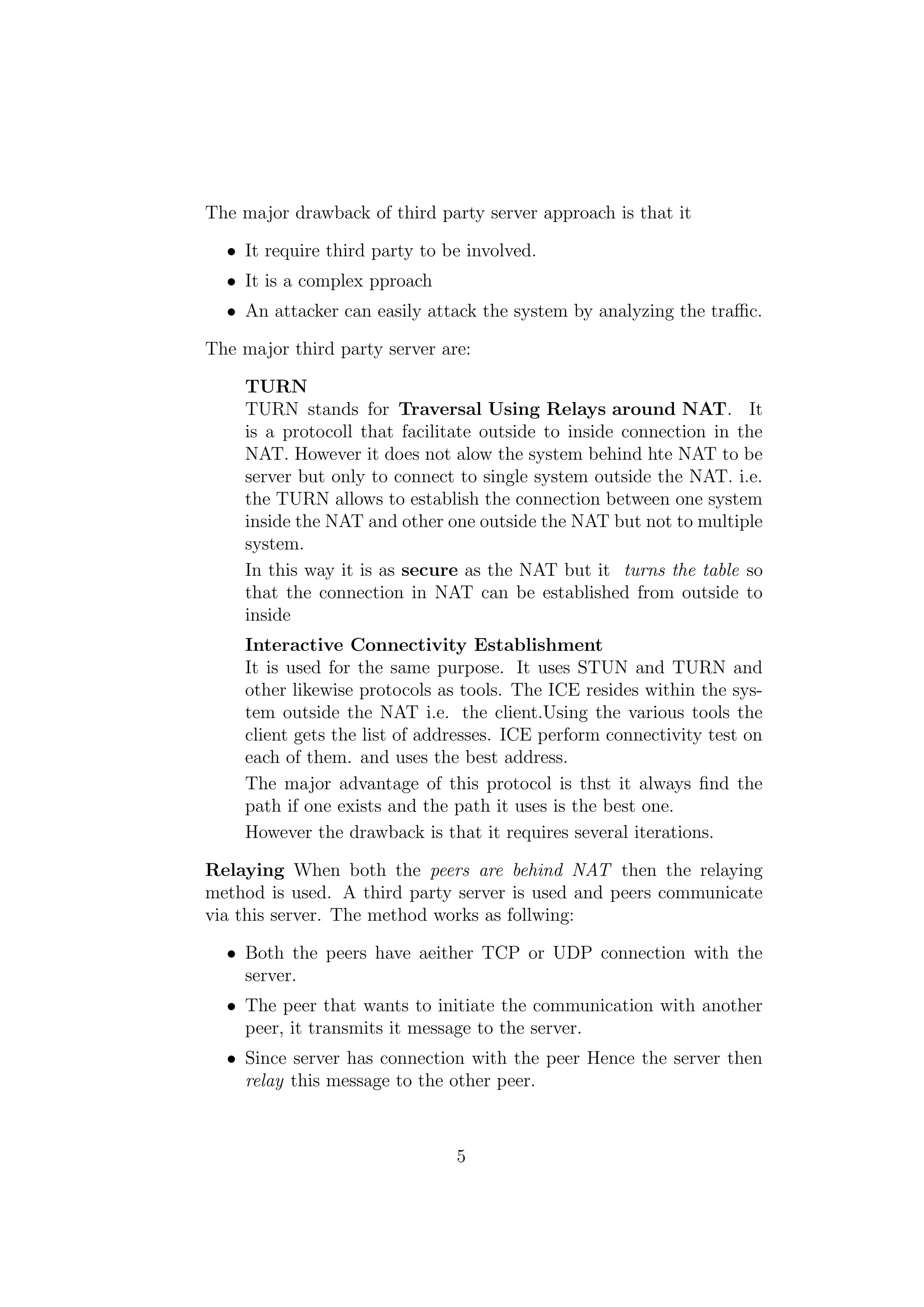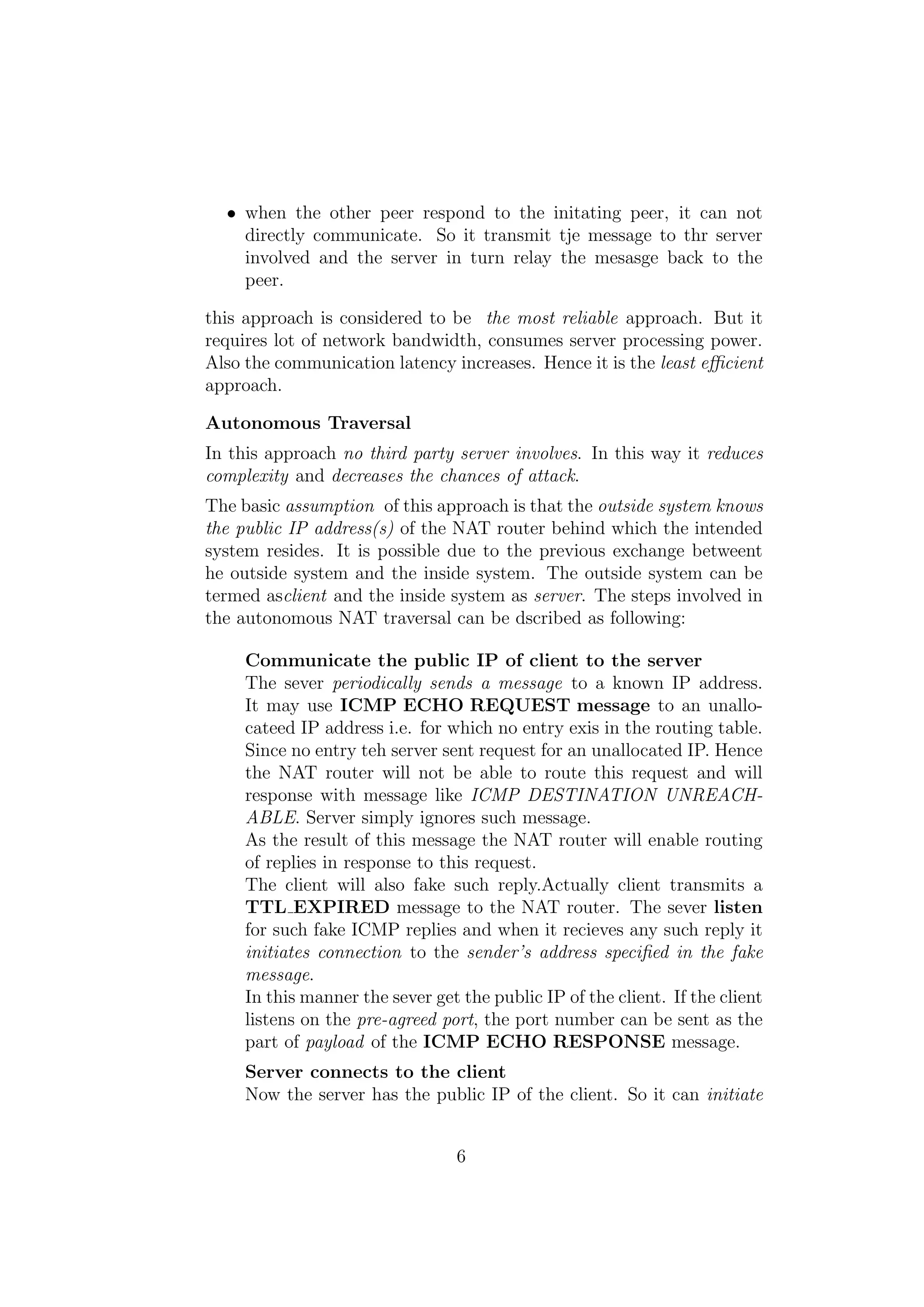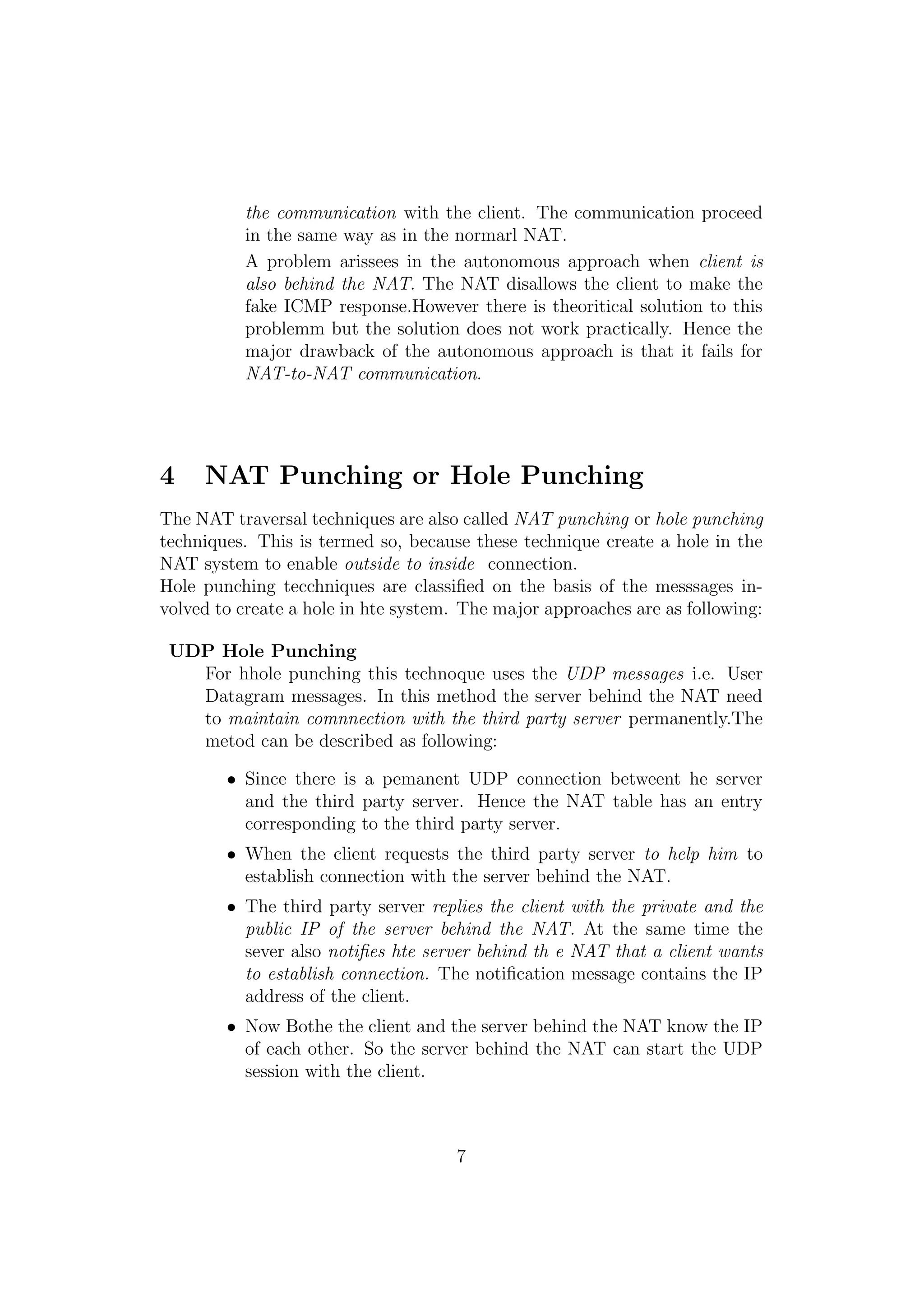Network Address Translation (NAT) allows private IP addresses to be used within a local area network (LAN) while providing access to the public internet. NAT maps private IP addresses to public IP addresses, allowing multiple devices to share public IP addresses. The main NAT traversal challenges are that NAT prevents outside systems from initiating connections to inside systems and communication between systems that are both behind NAT routers. Proposed solutions include using third-party servers to reverse connections or techniques like UDP and TCP hole punching that establish connections directly between systems.
